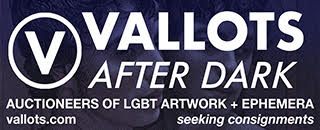LAST AUTUMN, the Center for Lesbian and Gay Studies at the City University of New York hosted the first-ever academic conference on Harry Hay, founder of the Mattachine Society and the Radical Faeries. It was an odd hybrid of a gathering, with many longtime Faeries rubbing shoulders with Marxist theorists and queer academics—a rubbing that occasionally produced friction. To be sure, some of this was of the tempest-in-a-teapot variety. For example, acolytes of Hay were outraged that John D’Emilio closed the conference with a mildly negative assessment of Hay’s impact as an activist, and much hand-wringing ensued. But some of the conflicts were more troubling, revealing sexist, essentialist, and transphobic attitudes on the part not only of some participants but of panelists as well.
At one panel, for example, a panelist nodded affirmatively as transmen were called “fake men” and gender-reassignment surgery was analogized to castration. At another, “LBT” folks were blamed for destroying the purity of “G” communities. At yet another, old wounds from lesbian separatism and the gay ghettos of the 1970s were reopened, as if no progress had been made and no coalitions built in the intervening four decades. It was more than a little unnerving, and as one of the younger presenters (at age 41) at the conference, I sought the solace of other queer scholars wondering what decade we had fallen into.
Harry Hay is not to be blamed for these excesses. And yet, as his thought does contain significant essentialist elements, it is as good a focus as any for situating a critique of naïve gay essentialism, and offering an alternative that attempts to save what is good and liberating about Hay’s ideas.
Chief among these ideas is Hay’s construction of what he calls “subject-subject consciousness,” which, he said, is at the center of a distinctively “fairy” gay perspective (the term “fairy,” at the time spelled in the usual fashion, in part refers to the gay male’s transcendence of the masculine/feminine binary) which would ultimately call for the revision and rethinking of all dualistic thought and science. In many writings, Hay makes the case that the fairy’s desire for another male, as opposed to for an “other” that can be objectified, gives the fairy an insight into how a nondualistic, non-objectifying, non-hierarchical relationship may be formed. Subject-subject consciousness is first glimpsed in relation, when one recognizes the desire for “another—just like me.” In contrast to heterosexual males thinking of girls as sex objects, Hay perceives the friend “as subject in exactly the same ways I perceived myself as subject” (emphasis Hay’s).*
Such a project is not unique to Hay. In a number of volumes, various gay male authors have attempted to elucidate the special gifts of being gay—or as they often write it, Gay.† Intuition, transcending gender binarisms, camp sensibility, a predilection for mysticism, and any number of other qualities that have been posited as essentially gay.
Of course, it is manifestly the case that many, probably most, gay men do not display these qualities. What is going on? Well, we are told, they are not really gay; they are hetero-imitative; they are corporate sellouts; they have fallen prey to the heterosexual capitalist machine; or whatever. Thus such theories must distinguish between real gays and false ones.
In Hay, for example, fairies can only be authentic as fairies. They cannot choose to be men but can only be “imitators of the Men.” And those gays who opt for masculine presentations—here I think of the macho culture of the late 1970s, which is clearly what Hay was reacting against—are harshly condemned as hetero-imitative and not in touch with their fairy nature. Or, to take an even more obvious and contemporary example, it is laughable to assert, in the context of gay bars, gay spas, gay ghettos, and gay gyms, that gay men regard one another as subjects rather than as objects. Surely mainstream gay culture, from Chelsea to the Castro, is among the most male-objectifying societies since ancient Greece. The advertising in any mainstream gay magazine objectifies men, teaches men how to become objects of desire and how to acquire other such objects. Personally, I am critical of this particular culture. But on what grounds is it any less “authentically gay” than Short Mountain Sanctuary (a Faerie retreat in Tennessee)?
Meanwhile, Hay’s manifold condemnation of all heterosexuals as being incapable of seeing one another as other than objects (or competitors) may be understandable as a literature of the oppressed, but is, to put it charitably, unsustainable. Quite obviously, many heterosexual males do not conform to the “Bully Boy” type that Hay repeatedly invokes. And Hay offers no real hope that “our Subject-Object brothers and sisters [are]going to begin to sit up and take notice,” given how hopelessly mired they are in dualistic thinking. In an age of intersectionality, in which activists are interested in forging broad anti-oppression coalitions, this sort of essentialist, separatist rhetoric is actively unhelpful.
To be fair, there is an important, and prescient, anti-essentialism at play in Hay as well. Hay firmly rejects the commonplace notion that gay identity is some combination of male and female—a “gay spirituality” trope justly criticized by some as “feminism without women”—instead positing a transcendence of the male/female binary. “The subject-object Man … is equally incapable of perceiving that fairies might not fit in either of Man-Woman categories.” Hay’s example of this is homegrown and yet provocative: bullies told fairies they threw balls like girls, but “did you ever ask the girls back then if they thought you threw a ball like them? They’d have straightened you out in nothing flat! They’d have told you you didn’t throw a ball like a girl—but like something other.” Written in 1980, before much of queer and transgender theory questioned the gender binary, this statement is practically prophetic. It rejects gender binarism and refutes the deeply problematic, misogynistic, and essentializing-of-women claim that gay men are somehow “feminine” and that, as a consequence, femininity is something that can be essentially defined as having certain characteristics.
At the same time, one cannot escape the dissatisfying reality that Hay is positing an essential fairy consciousness that inheres in certain people and defines them as against others. It is available to homoerotically inclined people but apparently not to heterosexually inclined ones, and it is apparently either not available to or not utilized by the majority of gays. It is a very narrow brand of specialness indeed. Ironically, then, Hay’s construction of “subject-subject consciousness” at once reinscribes and transcends gender essentialism.
And it has not aged well. Intra-Faerie squabbles such as the place of women and transgender folk in Faerie space, and the sort of outrageous rhetoric at the CLAGS conference, have made the lacunae in Hay’s writing more yawningly apparent. Obviously, there are heterosexually-inclined people who are subject-subject-oriented, and homosexuals who are not. And the notion of a gay or Fairy exclusivity—not just a “gay window” but a window which is uniquely free from grime—does not resonate with multicultural coalitions and communities. Further, thirty years on from the coalescing of these ideas, one cannot help but notice the role played by the woundedness of the fairy-as-outsider, a status many queers simply do not experience today. Not only assimilationist gays, but many cisgender, transfolk, queers, and gender-non-conforming people do not experience the kinds of otherness and marginalization that Hay describes in his work. To the extent that a queer consciousness may be postulated at all—and I think that extent is limited in any case—it cannot be grounded in a historically contingent sense of woundedness no longer held in common by all, or even most, gay or queer people.
What, then, is recoverable in subject-subject consciousness? At the CLAGS conference, I proposed a reading of Hay’s thought in the context of dialogical philosophy—that of Martin Buber in particular—and claimed that eros is its distinctive feature. Dialogical philosophers such as Martin Buber, Franz Rosenzweig, and Emmanuel Lévinas each have more thorough, less essentialistic, and less problematic constructions of intersubjectivity than Hay’s. Yet unlike these thinkers, Hay connects the dots between the dialogical perspective and erotic, gendered experience. As Audre Lorde has pointed out, the erotic is “a considered source of power and information within our lives.” Hay’s thought proves this point. It is sex, not (just) the inability of a fairy to throw a ball like a man, that teaches interdependence and intersubjectivity.
As for Hay’s restriction of this gateway to Fairies, I am reminded of the mystical adage that all religions are fingers pointing at the moon—yet the faithful fixate on the finger. Same-sex eroticism leads Hay to subject-subject and so he makes subject-subject the sole provenance of same-sex eroticism, whereas, of course, this is but one such gateway, and there are many others besides. We can set this particularism aside, however, and read Hay as an erotic dialogical, bearing out Lorde’s claim that “the erotic is the nurturer or nursemaid of all our deepest knowledge.”
In so doing, Hay brings eros back into the dialogical where it belongs. As scholar Jeffrey Kripal (Roads of Excess, Palaces of Wisdom, 2001) and others have discussed at length, discourses of the mystical are often displaced discourses of the erotic. This is as true for relational, dialogical mysticism like Buber’s as it is for unitive mysticism. Returning the erotic to a central place in dialogical thought while leaving behind the essentialist restrictions in Hay’s original formulation offers the possibility of an embodied and eroticized philosophy of relation, richer and more resilient than Buber’s rather disembodied one, but free of the particularism that drags down Hay.
There are many gateways into the dialogical: a philosopher contemplating his cat, a moment of religious ecstasy, and also an erotic encounter with another fully human person, not reduced to characteristics but encountered in the other’s alterity, in embodied individuality. The addition of this third occasion is not trivial, but potentially liberating.
* Quotations of Hay are from his 1980 manifesto, “Toward the New Frontiers of Fairy Vision: Subject-SUBJECT Consciousness,” a redacted version of which appears in Radically Gay, edited by Will Roscoe (Beacon, 1997). As explored herein, Hay’s “subject-subject” calls to mind Martin Buber’s “I-You” relationship in his classic philosophical treatise, I and Thou, published in German in 1923 and in English in 1937. I have explored this affinity in greater detail in “The Erotic Dialogical: Harry Hay in the Light of Martin Buber” (submission in progress).
† On the gay spirituality movement, see Rollan McCleary’s A Special Illumination: Authority, Inspiration and Heresy in Gay Spirituality (Equinox, 2004). Examples of the genre include Randy Conner’s Blossom of Bone: Reclaiming the Connections Between Homoeroticism and the Sacred (HarperSanFrancisco 1993); Toby Johnson’s Gay Spirituality: The Role of Gay Identity in the Transformation of Human Consciousness (Alyson Books, 2000); and Gay Spirit: Myth and Meaning, edited by Mark Thompson (St. Martin’s Press 1987).
Jay Michaelson is the author, most recently, of God vs. Gay? The Religious Case for Equality (Beacon Press, 2011).





